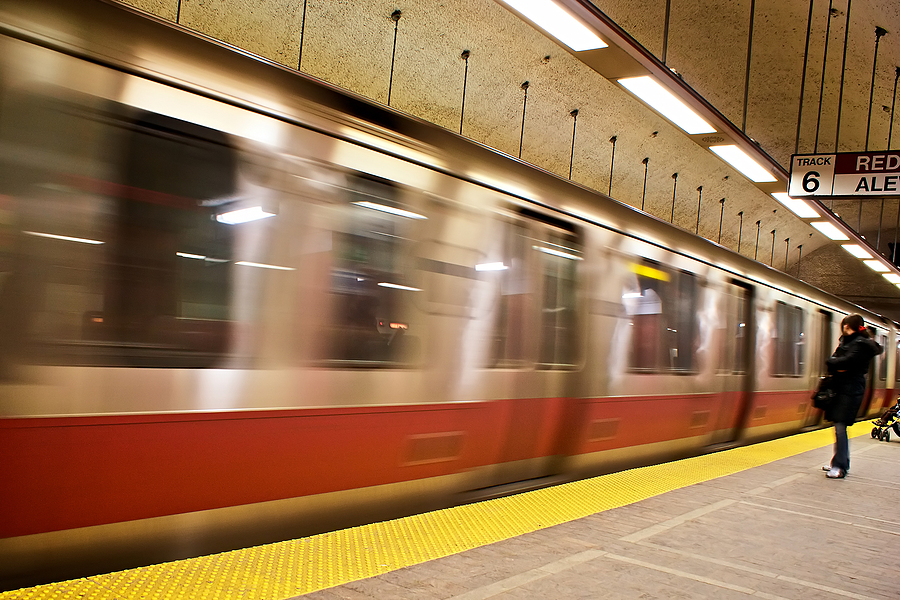A person waits for the MBTA Red Line.
Part 3: Assessing Proposed Expansions for Blue and Red Lines
The previous entry highlighted the importance of the MBTA as an affordable and community-oriented transit system, particularly in the face of rising gasoline prices. It discussed the subway, ferries, buses, and commuter rail, each with their own challenges. The story identified issues such as station repairs, vehicle replacements, track upgrades, and the need for increased service frequency. It also emphasized the need for further expansion of the transit system to better serve underserved Boston neighborhoods.
Over the past three decades, the T has seen minimal expansion despite its evident necessity, leading to a lag in critical areas. So, let’s explore some potentially beneficial and optimized extensions.
Before embarking on this journey, it’s worth noting the long-overdue Red-Blue connector should be completed. The absence of a direct transfer between the Red Line and the Blue Line is a tad embarrassing.
Although I’m not a staunch advocate of a permanent underground station, a temporary solution could be an underground Blue Line station and an above-ground Red Line station at the Charles/MGH stop, provided the Blue Line doesn’t require further extension.
The most effective extension strategy, as demonstrated by the recent Green Line extension to Medford, is utilizing existing or old lanes for simplicity (which will be detailed in the final piece of this series).
Blue Line
The long-anticipated extension of the Blue Line to Lynn could follow Diamond Creek, then cross North Shore Rd to a new North Revere station.
From there, the Blue Line can continue until it aligns with the Newburyport and Rockport line right-of-way, allowing an extension to Lynn, with stops at River Works (for GE employees), Commercial St, and the current Lynn station. Sufficient space exists on the current railway for this expansion (excluding the water portions).
Though potential exists for extending the Blue Line into Salem, the lower densities make it unnecessary.
On the flip side, the Blue Line could be extended into Cambridge (along the Red Line right-of-way) before veering around Broadway Terrace, burrowing under Broadway until Hampshire St, and then following Webster Avenue. The Blue Line could then continue until the Union Square Green Line stop to meet the Fitchburg commuter rail line.
It could then continue along the Fitchburg line until Brandeis/Roberts station, halting at the Porter Square, Belmont, Waverley, and Waltham commuter rail stops along the route. Stops could also be added at Beaver St (Warrendale), Brighton St (Cambridge Highlands), and Sherman St.
By extending the Blue Line to Brandeis/Roberts, certain commuter rail stops could be eliminated to alleviate congestion on the Fitchburg commuter rail line (specifically Brandeis/Roberts and Waverley).
This Blue Line extension would serve multiple purposes, most notably, connecting the Red Line with the Blue Line, linking Lynn and Waltham to Boston with rapid transit, and significantly improving service in Cambridge.
Red Line
Despite service challenges, the Red Line stands strong within the T system. However, it’s not without its flaws.
The glaring gap between JFK/UMass and North Quincy on the Braintree branch demands attention. The Braintree Branch should include a stop at Savin Hill (where it aligns and shares the same right-of-way as the Ashmont branch).
An infill station could also be added around Doucette Square.
However, the Braintree branch overall requires minimal improvement. An extension beyond Braintree seems unnecessary, given its distance from downtown Boston and relatively low-density area.
Similarly, the Ashmont branch requires little attention. The primary concern lies with the Mattapan trolley; while historic, it’s undeniably slow and dated. Replacing the Mattapan trolley with metro rail up until Mattapan could solve this, potentially eliminating some stops (leaving Mattapan, Valley Road, Milton, and Cedar Grove).
North towards Alewife, the Red Line faces significant challenges. The Alewife station was never intended to be the permanent terminus, which is evident in its current state of disrepair.
The Red Line could potentially extend a bit along the Minuteman bike path up to Massachusetts Avenue, introducing new stations at East Arlington and Arlington Square. A further extension to Arlington Heights could also be considered.
With the Minuteman bike path being popular, the Red Line could go elevated for this section.
In a broad perspective, the Red Line already offers perhaps the most comprehensive coverage among all T lines and might not need much more in terms of extension.
Editor’s note: This is the third article in a five-part series on fixing the MBTA.

